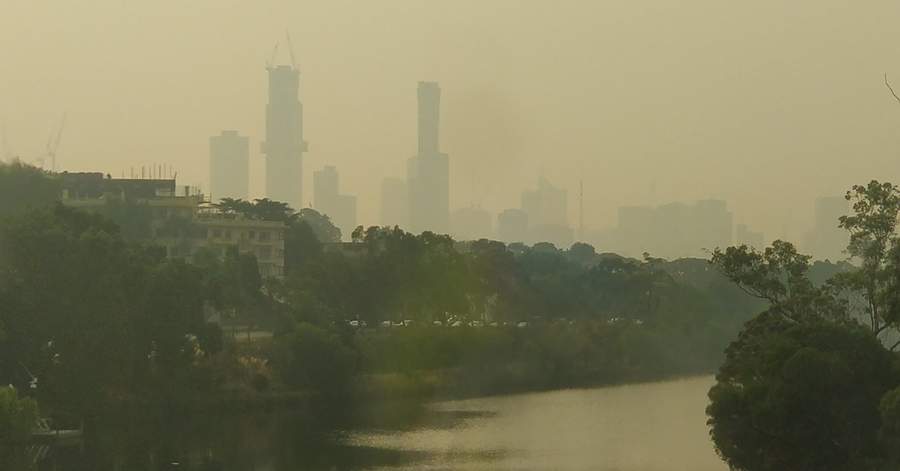Understanding the Health Implications of Inhaling Bushfire Smoke
The Environment Protection Authority Victoria reports that air quality in Melbourne dropped to “hazardous” levels this morning. We can certainly all see the smoke blanketing the city. But what are the health implications of inhaling bushfire smoke? Do you need to wear a face mask? Is there any point? What are we really inhaling in Melbourne right now – and what effect will it have on our bodies?
In December last year, Professor Bruce Thompson, Dean of Health Sciences at Swinburne University of Technology and President of the Thoracic Society of Australia and New Zealand, the peak body representing respiratory health professionals, stopped by Breakfasters to offer some answers to these questions – and helpful guidance, too. Below is an edited transcript of Bruce’s interview. Head this way to stream the full chat.

Photo (cropped) by Alpha on Flickr: https://www.flickr.com/photos/avlxyz/
The lungs are actually designed to only breathe in perfectly clean air. So as soon as you don’t breathe anything that’s perfectly clean, they’re going to say, ‘I don’t like this very much.’ And they react. So [for] people who have asthma, [the lungs] really do react; it’s like getting eczema inside your lungs. When you’ve got eczema on your elbow, it’s really, really itchy – but if you have it inside your lungs, you can’t stick your finger down inside your lung and give it a scratch, and it becomes very, very reactive. The problem is the lungs don’t repair themselves very well. So as soon as you get a rash and it starts generating a scar or something like that, it can’t actually repair itself. So it just gets worse and worse and worse.
The best thing to do is stay inside [in the presence of bushfire smoke]. And if you have asthma, the best thing to do is make sure you’re taking your medication. Two or three years ago we had a cool change come through: 39 degrees, dropped to 22, big thunderstorm, killed 10 people. Tragic that that actually happened. It’s unacceptable and we need to make sure that all the patients that are susceptible are taking medication as they should. If you get really wheezy, [head] straight to your doctor. And then stay inside.
[With face masks] what we’re trying to do is filter out the really nasty stuff, [which] is a particle size less than 2.5 microns – that’s really, really small. And if they’re that size and you inhale it, it actually gets right to the periphery of the lung. The lungs don’t like it, so they react and they basically scar. If the particle size is about seven microns, it sits in your nose – that’s why you get a really runny nose. Or, you swallow it – that’s why you get an itchy throat. So the ones we need to actually filter out are less than 2.5 microns. There’s only one sort of mask that’ll do that, but you have to wear it really, really well; it’s like wearing a full gas mask. You can do that. A standard face mask isn’t going to do much.
We’re all vulnerable – the whole lot of us shouldn’t actually accept this. But the people who are really vulnerable are the people who have lung disease, asthma, children in particular are very susceptible. So if you have a child with asthma, just don’t accept it. Make sure you’re on your medications; go see your doctor. I’ve just heard too many cases where [people have said], “I was really, really tired. My chest was so tight, I had to lie down; I was just feeling awful.” So what did you do? “Nothing.” Why not? We talk about exacerbations of asthma or asthma attack, you wouldn’t say the same thing if I had really strong chest pain radiating down to my left side, jaw pain, [was] sweaty, [and] feeling like I’m having a heart attack. You wouldn’t say, “That’s OK – I’ll lie down.” You would really do something. If you rolled into an emergency department with those symptoms, every light would go off. So it’s no different. An asthma attack can be life threatening.
